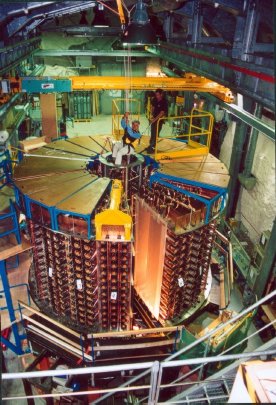


|
Neutrino Ettore Majorana Observatory | 
|
There are many experiments, currently running, being constructed or planned that will use artificial neutrino beams created at particle accelerators to explore the neutrino oscillation phenomenon in great details. The UCL HEP group is actively participating in one of these projects &mdash the MINOS experiment.
However there are two questions which are absolutetly fundamental for our understanding of neutrinos and which neutrino oscillation can not answer:
- What is the absolute value of neutrino mass?(recall that neutrino oscillations measure mass differences, or to be precise mass-squared diffrences, between different neutrino states, not the absolute mass).
- Given that neutrino mass is not zero, why is it so much smaller compared to the masses of other fermions in the Standard Model?
It is clear that we have to provide an answer on the first question. But the second question might be even more fundamental. The answer on this question may be found if we can understood whether neutrino is a Majorana or a Dirac particle. All the fermions in the Standard Model are Dirac particles by nature, where the antiparticle is the charge conjugate of the particle and has equal but opposite quantum numbers. Neutrinos, however, have an extra possibility due to their neutral charge. It is not forbidden for neutrinos to have a Majorana mass which would imply that the neutrino and antineutrino are the same particle. This possibility seems to be favoured by the theoretical community, indeed it is a requirement of many GUTs. The Majorana nature of the neutrino leads to the non-conservation of the full lepton number and can address many fundamental questions. In particular it can explain a tiny assymetry between matter and antimatter shortly after the Big Bang which was necessary to make the surrounding us world evolve the way it did.
Experiments which can answer both questions are searching for neutrinoless double beta decay &mdash 0&nu&beta&beta. In fact, 0&nu&beta&beta is the only practicaly way to understand whether neutrino is a Majorana or a Dirac particle.
Double beta decay is a process in which, unlike the ordinary beta decay, two neutrons are simulataneously transformed into two protons.